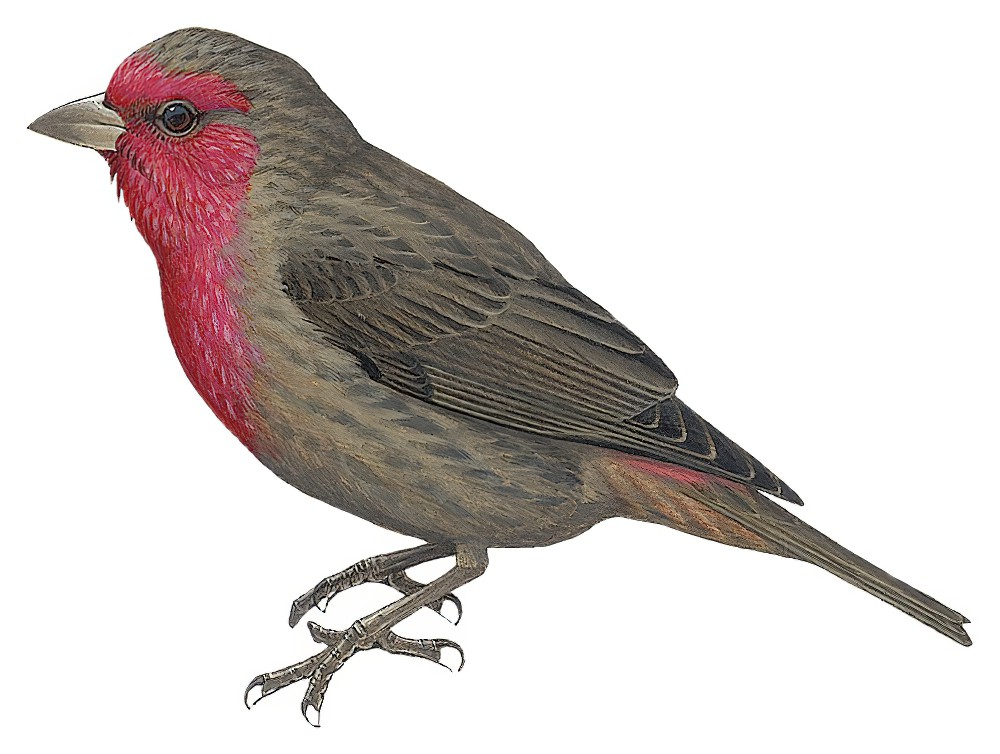The Crimson Rosefinch: Carpodacus Puniceus Kilianensis
Share
The Crimson Rosefinch, scientifically known as Carpodacus puniceus kilianensis, is a captivating bird species belonging to the family Fringillidae. This subspecies of the rosefinch is primarily found in the high-altitude regions of Central Asia, particularly in the western Kun Lun mountains of Sinkiang, as well as parts of Kirghizstan, Tadzhikistan, and northeastern Ladak. This article delves into the taxonomy, physical characteristics, habitat, diet, behavior, reproduction, and conservation status of this remarkable bird.

Taxonomy
The Crimson Rosefinch is classified under the order Passeriformes, which encompasses a vast array of songbirds. Within this order, it belongs to the family Fringillidae, known for its finches and allies. The suborder Oscines includes the songbirds, while the subfamily Carduelinae is home to the rosefinches. The subspecies kilianensis was first described by Vaurie in 1956, highlighting its distinct characteristics and geographical distribution.
Physical Characteristics
The Crimson Rosefinch is a medium-sized bird, characterized by its vibrant plumage. Males typically exhibit a striking crimson red coloration on their heads, throats, and chests, which contrasts beautifully with their brownish wings and tails. Females, on the other hand, are more subdued in color, featuring a mix of brown and streaked patterns that provide excellent camouflage in their natural habitat.

Habitat
This subspecies thrives in high-altitude environments, often found at elevations around 15,000 feet in the western Kun Lun mountains. The Crimson Rosefinch prefers rocky slopes, alpine meadows, and areas with sparse vegetation, where it can forage for food and build its nests. The harsh climate of these regions, characterized by cold temperatures and strong winds, shapes the bird's adaptations and behaviors.

Diet
The diet of the Crimson Rosefinch primarily consists of seeds, berries, and various plant materials. During the breeding season, they may also consume insects to provide essential protein for their young. Their strong, conical beaks are perfectly adapted for cracking open seeds, allowing them to exploit a variety of food sources in their alpine habitat.
Behavior
Crimson Rosefinches are known for their melodious songs, which they use to communicate with one another, especially during the breeding season. Males are particularly vocal, often singing from prominent perches to establish territory and attract mates. These birds are generally social, often seen in small flocks, especially outside the breeding season.

Reproduction
The breeding season for the Crimson Rosefinch typically occurs in late spring to early summer. Males perform elaborate courtship displays to attract females, showcasing their vibrant plumage and singing abilities. Nests are usually built in shrubs or low vegetation, where females lay a clutch of 3 to 5 eggs. Both parents participate in feeding the chicks until they fledge.
Conservation Status
Currently, the conservation status of Carpodacus puniceus kilianensis is not well-documented, but habitat loss due to climate change and human activities poses potential threats. Monitoring populations and protecting their high-altitude habitats are essential for ensuring the survival of this beautiful bird.
Final Thoughts
The Crimson Rosefinch is a stunning example of avian beauty and adaptation to extreme environments. Its vibrant colors and melodious songs make it a favorite among birdwatchers and nature enthusiasts. Observing this species in its natural habitat can be a rewarding experience, especially in the breathtaking landscapes of Central Asia. For those interested in birdwatching, visiting high-altitude regions during the breeding season offers the best chance to encounter this remarkable bird.
In the grand tapestry of nature, the Crimson Rosefinch stands out not only for its beauty but also for its role in the ecosystem, reminding us of the delicate balance that sustains life in even the harshest conditions.
